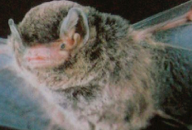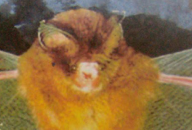borneo bats
deer cave viewing station
GUNUNG MULU NATIONAL PARK
sarawak, east malaysia,borneo
MAY 6, 2009


borneo bats
deer cave viewing station
GUNUNG MULU NATIONAL PARK
sarawak, east malaysia,borneo
MAY 6, 2009



There are estimated to be more than 3 million bats living in Deer Cave at Gunung Mulu National Park. Bats are the only flying mammal; whereas, any other, such as the flying squirrel, is simply a glider. There are more than 1000 species of bats in the world, which live everywhere but the driest deserts and the deep polar regions of earth. Thirty species of bats live in Mulu; and, of these, 9 are megabats (large bats like fruit bats) and 21 are microbats (or small bats). Of these, 18 are cave dwellers and 12 prefer to live in trees, including bamboo trees. The reason Mulu has such diversity in bat species, is because the mountainous limestone karsts offer many different altitudes, while 200 caves offer hundreds of kilometers of cave passages for bat dwellings. While walking through Deer Cave, a World Heritage Site, we saw great piles of bat guano, heard the rustling sound of bats on the lofty ceiling of this gigantic cave, and considered ourselves lucky not to have been “blessed” by their droppings. We learned many interesting things about bats, including these fascinating facts:
Bat Anatomy The bat, a distant relative of the human being, has a similar arm and hand configuration, including a thumb. The difference between us and them is the long length of the fingers and the fleshy wing covering which covers the arm and hand. Adapted to hang upside down, this inversion requires no expenditure of energy, the bat body is engineered with its knees facing backward. Special tendons in the toes to grip without strain, and a neck swivels to be able to see behind while hanging upside down. When the bat takes off in flight, it actually has to flex muscles to release its grip from the ceiling of the cave. Bats are not blind, but have extraordinary eyesight. They can see in both daytime, and by moonlight and starlight. In the dark, they’ve developed an extra sense called echolocation, which bounces sound waves off objects allowing them to determine food sources or barriers. To further enhance their ability to hunt, some bats species have evolved anatomical adaptations such as large ears to hear better, or facial flanges to channel sound directly to the ears. Some bats have developed catching nets between their feet and tail to trap flying insects. Others, have developed large cheek pouches to hold caught food to be consumed later.
Life Cycle of Bats Bats, like kangaroos, have the ability to suspend the development of a fertilized egg for many months. The yearly cycle of the bat community would find mature female bats, (at least 2 years of age) impregnated in early spring, giving birth after 40 days gestation in late spring, nursing the bat pups, weaning and teaching them how to find food. By autum, the pups are independent and the female is once again fertile, and is impregnated by one of the males in the colony before flying off in the autumn for semi-hibernation over the winter months. Early in the pregnancy, the development of the embryo is suspended. Once the colony of bats reconvene, the bats assess the conditions of their environment. If there is abundant food, then the already fertilized embryo contained within is allowed to develop. If food is scarce, then the embryo is aborted. This commual decision results in all bats being born at more or less the same time, within a few days of one another. The hairless pink pups are clustered together in grape-like bunches on branches of a nursery which hang from the ceiling. During the first few days, the pup clings to the mother’s body, being nourished by her milk. After a few days, she flies off hunting for food. When returning, she crawls across the heap of baby bats, recognizing her own by smell, then moving the thumb-sized pup aside to nurse. Afterward, the mother hangs from the ceiling to rest to and replenish her energy before hunting again. When the mother bats leave the cave, the adolescent females become “nannies” who gently push the more adventuresome pups back into the nursery heap until the mothers return.
Bats are useful creatures because they polinate trees and plants, and because they eat insects, especially the dreaded mosquito. To see the flight of bats, we needed to complete our tour of the cave around 5 PM. During our tour of Deer Cave, we saw no fewer than five dead bats that Liban, our guide, kicked aside, curious about why they had died, suspecting it might be from lack of food. Mulu National Park could certainly not guarantee that we would witness the flight of the bats out of Deer Cave this particular evening. These creatures, preferring dry conditions, had flown the night before; and, it was somewhat doubtful they would fly again that night. Henry and I, and approximately two dozen other park visitors were stationed at Mulu Park’s comfortable viewing facility that offered a great view of the cave’s opening. Awaiting with great anticipation, Henry readied his binoculars, which afforded us an enhanced view. The first person to spot the brown cluster of bats, silhouetted against the white limestone rock, was one of the Chinese visitors, who gasped. Liban dashed over to us, to make sure we knew where to look and what to see. Suddenly, the bats became very clear, as colony after colony began emerging from the cave, flying in the direction of the setting sun. These were relatively smaller groups, no larger than a flock of birds. As the evening progressed, the flight of bats increased in scale until they numbered into the tens of thousands. Their flight began at roughly 5:30 PM, when the setting sun no longer lighted the cave entrance, and continued for at least half an hour. Nearer 6 PM, the density of the bats, emerging in a continuous steady stream, appeared like smoke rising into the twilight sky. These amazing creatures fly at speeds up to 100 kph/60mph and at heights of 3,000 meters or 10,000 feet. The bats hunt insects all night, returning to the cave by daylight. It is estimated that these great numbers of bats consume at least 15 million insects when they fly. The diet of the various species varies. Some, such as the fruit bats, live mainly on fruit and their juice. Others speialize in eating fish, birds, or even other bats. Some respond to the mating call of the frogs, which they consume, while others eat only insects. The natural predators are of the smaller bats are the owl, and the hawk.
PHOTOS: Left Column: 1. Bats in flight! One of the first of the bat colonies to leave Deer Cave at twilight. 2. Borneo Horseshoe Bat. 3. Greater Sheath-tailed Bat. 4. A late streaming of bats, their curvilinear flight pattern looking remarkably like smoke. Center, Top: The limstone cliff with the opening of Deer Cave encircled. The bats flew from this cave opening. Center, Bottom: The endless stream of what must have been millions of bats, all flying into the twilight sky for their overnight hunt. Right Column: 1. An outpouring of bats flying into the night. These bats seemed to stream endlessly from the cave opening. 2. Lesser Bent-Wing Bat. 3. Fawn Roundleaf Bat. 4. Bats on the wing leaving Deer Cave at Gunung.Mulu National Park.


The Flight of 3 Million Bats!








